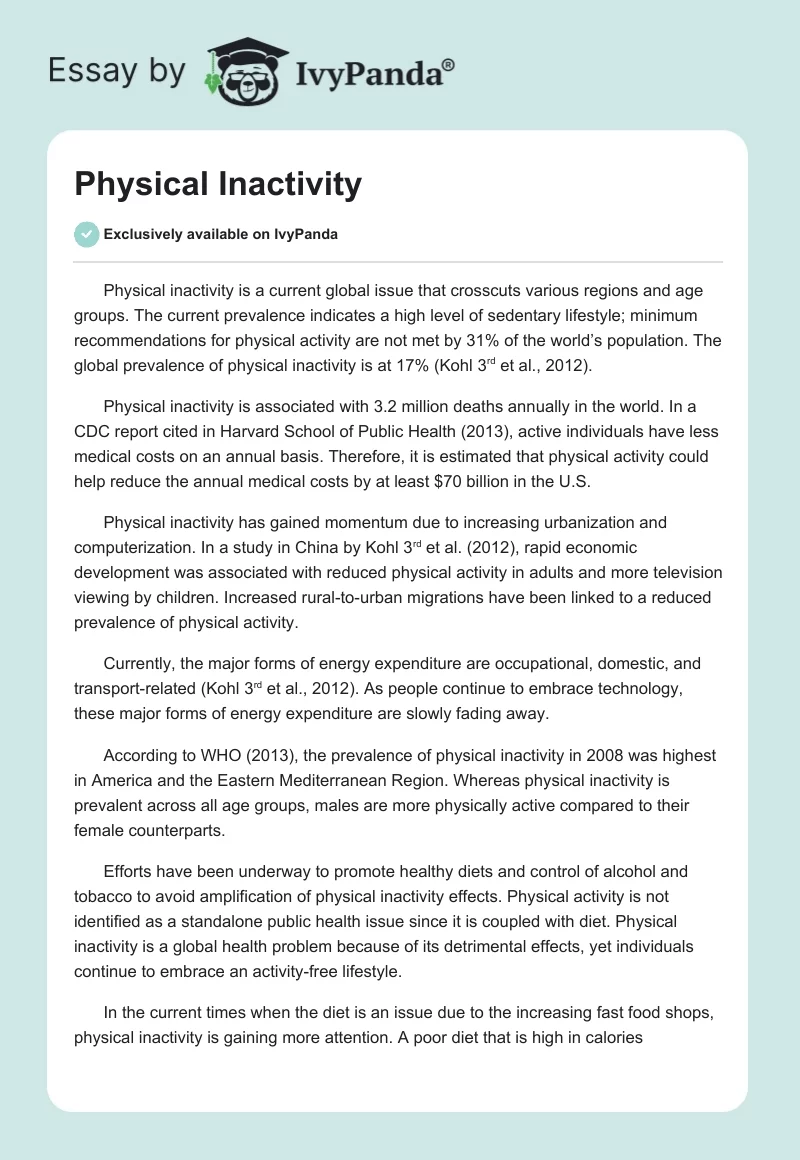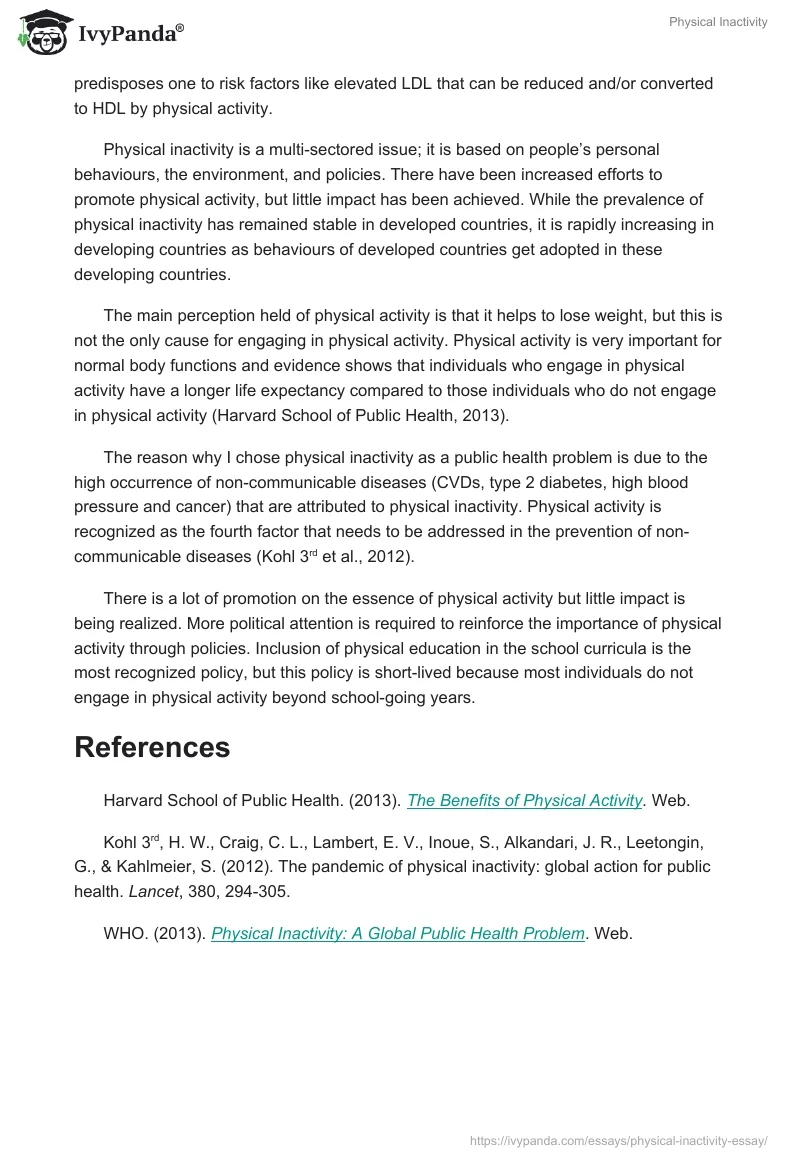Physical inactivity is a current global issue that crosscuts various regions and age groups. The current prevalence indicates a high level of sedentary lifestyle; minimum recommendations for physical activity are not met by 31% of the world’s population. The global prevalence of physical inactivity is at 17% (Kohl 3rd et al., 2012).
Physical inactivity is associated with 3.2 million deaths annually in the world. In a CDC report cited in Harvard School of Public Health (2013), active individuals have less medical costs on an annual basis. Therefore, it is estimated that physical activity could help reduce the annual medical costs by at least $70 billion in the U.S.
Physical inactivity has gained momentum due to increasing urbanization and computerization. In a study in China by Kohl 3rd et al. (2012), rapid economic development was associated with reduced physical activity in adults and more television viewing by children. Increased rural-to-urban migrations have been linked to a reduced prevalence of physical activity.
Currently, the major forms of energy expenditure are occupational, domestic, and transport-related (Kohl 3rd et al., 2012). As people continue to embrace technology, these major forms of energy expenditure are slowly fading away.
According to WHO (2013), the prevalence of physical inactivity in 2008 was highest in America and the Eastern Mediterranean Region. Whereas physical inactivity is prevalent across all age groups, males are more physically active compared to their female counterparts.
Efforts have been underway to promote healthy diets and control of alcohol and tobacco to avoid amplification of physical inactivity effects. Physical activity is not identified as a standalone public health issue since it is coupled with diet. Physical inactivity is a global health problem because of its detrimental effects, yet individuals continue to embrace an activity-free lifestyle.
In the current times when the diet is an issue due to the increasing fast food shops, physical inactivity is gaining more attention. A poor diet that is high in calories predisposes one to risk factors like elevated LDL that can be reduced and/or converted to HDL by physical activity.
Physical inactivity is a multi-sectored issue; it is based on people’s personal behaviours, the environment, and policies. There have been increased efforts to promote physical activity, but little impact has been achieved. While the prevalence of physical inactivity has remained stable in developed countries, it is rapidly increasing in developing countries as behaviours of developed countries get adopted in these developing countries.
The main perception held of physical activity is that it helps to lose weight, but this is not the only cause for engaging in physical activity. Physical activity is very important for normal body functions and evidence shows that individuals who engage in physical activity have a longer life expectancy compared to those individuals who do not engage in physical activity (Harvard School of Public Health, 2013).
The reason why I chose physical inactivity as a public health problem is due to the high occurrence of non-communicable diseases (CVDs, type 2 diabetes, high blood pressure and cancer) that are attributed to physical inactivity. Physical activity is recognized as the fourth factor that needs to be addressed in the prevention of non-communicable diseases (Kohl 3rd et al., 2012).
There is a lot of promotion on the essence of physical activity but little impact is being realized. More political attention is required to reinforce the importance of physical activity through policies. Inclusion of physical education in the school curricula is the most recognized policy, but this policy is short-lived because most individuals do not engage in physical activity beyond school-going years.
References
Harvard School of Public Health. (2013). The Benefits of Physical Activity. Web.
Kohl 3rd, H. W., Craig, C. L., Lambert, E. V., Inoue, S., Alkandari, J. R., Leetongin, G., & Kahlmeier, S. (2012). The pandemic of physical inactivity: global action for public health. Lancet, 380, 294-305.
WHO. (2013). Physical Inactivity: A Global Public Health Problem. Web.


